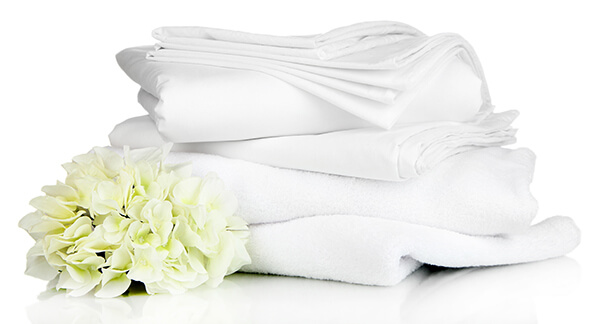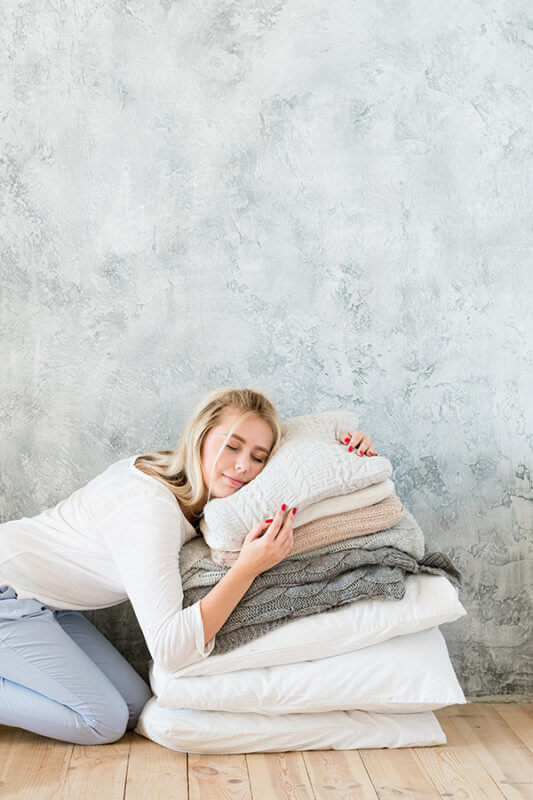And they are most likely to visit big discount retailers or e-commerce sites to make their purchases
Sheets and pillows were the most commonly purchased sleep accessories in the past year, a new Better Sleep Council consumer survey reveals.

The survey found that 83% of the consumers who purchased a sleep accessory in the past year bought sheets, while 76% bought pillows.

Those sleep accessories were much more frequently purchased than mattress pads/protectors (47%) and mattress toppers (37%).

And sheets and pillows were rated as more enjoyable to shop for than other sleep accessories, according to the survey conducted for the BSC, the bedding industry’s consumer education arm.

Almost 80% of consumers said they enjoyed shopping for sheets “a lot” (39%) or “a little” (40%), while 77% of the consumers shopping for pillows had similar responses. The combined figures were much lower for mattress pads/protectors (61%) and for mattress toppers (58%).

Seven in 10 of the consumers surveyed said they enjoyed the mattress shopping experience “a lot” (33%) or “a little” (37%).

Consumers also said shopping was triggered by the need to replace existing products. Many consumers also said they wanted to upgrade to better products.
Those are some of the highlights of the online BSC survey, conducted by the BSC’s long-time research partner, Fluent.
That company surveyed 1,000 consumers in March of 2022 to gain a deeper understanding of consumers’ views on and experiences with the purchase of mattress accessories, a category gaining importance as mattress retailers seek to build their sales tickets in a challenging business climate.

“Sleep accessories are vital to adding comfort to the sleep experience,” notes Mary Helen Rogers, vice president of marketing and communications for the International Sleep Products Association, the BSC’s parent. “They also are a vital part of many mattress sales, so it is critical for mattress retailers to understand the dynamics that drive the purchase of sleep accessories.”
The survey looked at four key sleep accessory products: bed sheets, sleep pillows, mattress toppers and mattress pads/protectors. Survey participants purchased at least one of those products in the past year. And nearly four in 10 (37%) also purchased a mattress in the past year. Those purchasers are more likely than others to purchase a range of accessory products.
Looking at consumers who purchased a mattress in the past year, the survey found that 90% purchased bed sheets, 86% purchased pillows, 72% purchased mattress pads/protectors, and 60% purchased mattress toppers.
“These high purchase rates for sleep accessories show the powerful connection between mattress sales and sleep accessory sales,” Rogers says. “Consumers are often looking to improve their complete sleep experience when they purchase a new mattress.”
At least one-third of accessory purchasers said they are extremely or very interested in purchasing sheets, pillows, a topper or a mattress pad at the same time they purchase a mattress.
The top features that consumers consider when purchasing sleep accessories are the feel of the products and the fabric type. Cooling features and hypoallergenic qualities also are top characteristics for purchases of pillows and toppers, the survey found.
Many accessory purchasers bought multiple mattress accessories at the same time; more than four in 10 bought more than one accessory type during the same purchase.
Big discount stores and online retailers are the most common locations for accessory purchases, the survey found.
Of the 28% of consumers who said they purchased bedding accessories at a big discount store, most of those (21%) said they purchased at brick-and-mortar discount store locations, while 6% purchased from those discount stores’ online stores.

Mattress chain stores are far down that list, with just 7% of consumers saying they had purchased bedding accessories at those brick-and-mortar stores or their online stores. Furniture stores had an even poorer showing, with just 5% of bedding accessory purchases being made at brick-and-mortar furniture stores or their online stores.
Overall, brick-and-mortar retailers accounted for a slight majority (52%) of bedding accessories purchases, while online sales accounted for 46% of purchases.
Consumers purchasing at least three of the four accessory types at the same time are much more likely to have made those purchases online; 57% of those consumers purchased online, compared to 40% who purchased at a brick-and-mortar store.
“These figures illustrate the growing importance of the online shopping world,” Rogers says. “Consumers are clearly comfortable making multiple bedding accessory purchases online.”
And consumers purchasing multiple accessories at the same time are more likely to be younger, have higher incomes, have children, and live in urban areas, the survey says.
The survey found that consumers expect to get longer use out of their mattress toppers and pads than their sheets and pillows. The anticipated duration of use of mattress toppers is a mean of 4.5 years, while it’s 4.4 years for mattress pads/protectors, 3.7 years for bed sheets and 3.5 years for pillows.
The bedding accessories purchasers also were asked about the quality of their sleep. Thirty-two percent of the respondents said they were very satisfied with the quality of their sleep, while 39% said they were somewhat satisfied, 13% were neither satisfied nor dissatisfied, and 16% were very or somewhat dissatisfied.
“The relatively high percentage of consumers who were only ‘somewhat satisfied’ with their sleep provides a big opportunity to the sleep products industry,” Rogers says. “Many of those consumers would probably benefit from a new mattress and new sleep accessories. A good night’s sleep is vital to our health, and with the wealth of high-quality mattresses and sleep accessories on the market, consumers don’t need to settle for anything less than a night of good sleep.”
Asked about the type of mattress that they currently sleep on, 43% of the survey respondents said a spring mattress, while 36% said a foam mattress made without springs or coils. Almost half of the consumers (45%) said their mattress was purchased in the past one to four years; 18% said it was purchased in the past year.







